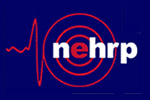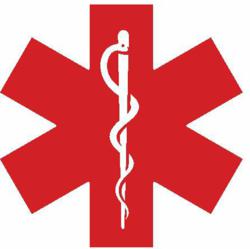Insights
- Home /
- Insights
Insights are temporal notices, reviews and notes - that "expire"
iPhone (and Android) Apps for Ham Radio
- John Cornelison
- 2/21/12
 This handy list (and mini-reviews) of iPhone apps for ham radio enthusiasts is courtesy of Keith Francisco – or more likely from http://www.k0nr.com/wordpress/2011/04/the-incomplete-list-of-ham-radio-iphone-apps/ – in either case, thanks!
This handy list (and mini-reviews) of iPhone apps for ham radio enthusiasts is courtesy of Keith Francisco – or more likely from http://www.k0nr.com/wordpress/2011/04/the-incomplete-list-of-ham-radio-iphone-apps/ – in either case, thanks!
Amateur Radio (Ham) License testing session on Vashon
- John Cornelison
- 2/21/12
Tags
Training , Arrl , Vmirc , Ares

Cascadia Mega-Quake Threat-- Even Larger than Previously Thought?
- John Cornelison
- 2/21/12
Tags
Cascadia , Earthquakes , Japan , Study , Vashon , Seattle
 Japan’s Tohoku earthquake last year has provided valuable data that is altering scientists’ understanding of our local Cascadia earthquake potential. Geologists have documented some 22 megaquakes over the last 10,000 years - every 200 to 1,000 years, averaging some 500 years. The region’s last was on January 26, 1700.
Japan’s Tohoku earthquake last year has provided valuable data that is altering scientists’ understanding of our local Cascadia earthquake potential. Geologists have documented some 22 megaquakes over the last 10,000 years - every 200 to 1,000 years, averaging some 500 years. The region’s last was on January 26, 1700.
Reducing the Risks of Nonstructural Earthquake Damage—A Practical Guide, Fourth Edition (FEMA E-74)
- John Cornelison
- 2/9/12
 Reducing the Risks of Nonstructural Earthquake Damage—A Practical Guide, Fourth Edition (FEMA E-74)
Reducing the Risks of Nonstructural Earthquake Damage—A Practical Guide, Fourth Edition (FEMA E-74)
Course Description
Nonstructural components of buildings include all elements that are not part of the structural system; that is, the architectural, mechanical, electrical, and plumbing systems, as well as furniture, fixtures, equipment, and other contents. During the recent earthquakes in Chile, New Zealand, Japan, Virginia and other earlier earthquakes in California, Washington, and other parts of the U.S., nonstructural failures have accounted for the majority of damage and injuries. In many cases, businesses, schools, hospitals, and other organizations had to spend excessive time and dollars for clean up and repair due to nonstructural failures; therefore impeding continued operations and rapid recovery. Moreover, nonstructural component failures also impeded safe evacuation, delayed rescue, and caused additional hazards such as fire resulting in serious life safety issues.
Read MoreWhat’s the link between our warming planet and our extreme weather?
- John Cornelison
- 2/8/12
 A new National Center on Atmospheric Research (NCAR) web site titled “Weather on Steroids” explores the connection between all the unusual weather and climate change. Getting a handle on the true changes due to global warming requires massive statistical and scientific analyses.
A new National Center on Atmospheric Research (NCAR) web site titled “Weather on Steroids” explores the connection between all the unusual weather and climate change. Getting a handle on the true changes due to global warming requires massive statistical and scientific analyses.
Earthquakes Maps Updated–For Eastern US
- John Cornelison
- 2/1/12
Tags
Earthquakes , Gis , Usgs , Us , Prediction
![Figure 3.2.7. Map of the CEUS SSC Project catalog showing earthquakes of uniform moment magnitude E[M] 2.9 and larger. Colored symbols denote earthquakes not contained in the USGS seismic hazard mapping catalog. CEUS SSC Projects Figure 3.2-7.gif](/Portals/1/Graphics/Maps/CEUS%20SSC%20Projects%20Figure%203.2-7.gif)
 Thanks to the NY Times for noting the first update to eastern US earthquake maps in almost a quarter century. Sad that it was apparently only done to spur permitting of nuclear power plants.
Thanks to the NY Times for noting the first update to eastern US earthquake maps in almost a quarter century. Sad that it was apparently only done to spur permitting of nuclear power plants.
2nd Food Storage for Emergencies Workshop Announced
- John Cornelison
- 1/31/12
 Due to the high demand, a SECOND series of Food Storage for Emergencies workshops will be held on three Monday evenings, 7-9 pm! See details below. Please pre-register and pass the word!
Due to the high demand, a SECOND series of Food Storage for Emergencies workshops will be held on three Monday evenings, 7-9 pm! See details below. Please pre-register and pass the word!
Cascadia Mega-Fault Due to Rupture
 …sometime in the next 500 years, according to a great blog a couple weeks back by the PSSN’s John Vidale, a regular contributor to their “Seismo Blog” How likely is it to go? Well you’ll have to read his blog that breaks down some of the inputs to evaluating the actual risk factor – which I think he never actually stated…
…sometime in the next 500 years, according to a great blog a couple weeks back by the PSSN’s John Vidale, a regular contributor to their “Seismo Blog” How likely is it to go? Well you’ll have to read his blog that breaks down some of the inputs to evaluating the actual risk factor – which I think he never actually stated…
Do you know Washington’s four kinds of earthquake sources?
- John Cornelison
- 1/11/12
Tags
Wa , Nisqually , Gis , Earthquakes , Study , Cascadia , Oregon

![]() Cascadia Subduction Zone
Cascadia Subduction Zone
Example: the 1700 earthquake that caused shaking and a tsunami that inundated the Oregon coast and reached as far as Japan.
Categories
Tags
- 2015
- ACS
- AED
- Alerts
- Amateur Radio
- Animals
- ARES
- ARRL
- Art
- Basic First Aid
- Batteries
- BC
- BigOne
- BNERO
- Business
- Business Continuity
- California
- Canada
- Cascadia
- CCT
- CERT
- Chile
- Citizen Corps
- Class
- Climate
- Climate Change
- Communications
- Community
- CPR
- Credentialing
- Crisis Mapping
- Critical Locations
- Crowdsourcing
- CSZ
- Dean Murphy
- Debris
- DNR
- Donations
- Earthquake
- Earthquakes
- EMCOMM
- Emergency Preparedness Seminar
- Emotions
- EOC
- Equestrians
- Events
- Exercise
- FCC
- Feb
- Federal
- FEMA
- Financial
- Fire
- Flood
- Funding
- Fundraiser
- Generator
- GIS
- Global
- Grants
- Ham Radio
- Hardware
- HazMat
- Health
- Healthcare
- Heat
- History
- Horse
- Household
- Housing
- Hugo
- Humor
- ICS
- IMT
- Individual Preparedness
- Insurance
- Island Crossroads
- Japan
- KCOEM
- KCSO
- Kids
- Landslides
- Lecture
- Legislation
- License
- Logistics
- March
- March 31
- Maury Island
- Meetings
- MERT
- Mitigation
- MRC
- Nepal
- NERO
- New Zealand
- NewYorker
- NIMS
- Nisqually
- NOAA
- NVOAD
- Oil Spill
- Oregon
- Oso
- PI
- Planning
- Power Outage
- Prediction
- Preparation
- Preparedness
- Preparedness Intro Video Voiceofvashon
- Press
- PSE
- Ready.gov
- Recovery
- Red Cross
- Region X
- Regional
- Resilience
- Resiliency
- Resources
- Schools
- Sea Level
- Seattle
- Seismology
- Shelters
- Sheriff
- Situation Awareness
- Skills
- Software
- SoundShake
- Standards
- Storm
- Study
- Tacoma
- Tailwind
- Technology
- Training
- Tsunami
- US
- USGS
- VAA
- Vashon
- VashonBePrepared
- VashonEOC.org
- VEPC
- VIFR
- VMIRC
- Voiceofvashon
- Volunteers
- VoV
- W7VMI
- WA
- Water
- Weather
- WEMD
- West Seattle
- WSEMA

